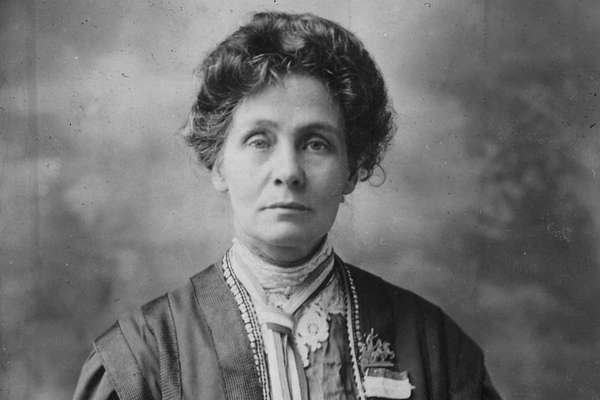In pictures
Women's suffrage
From the late 19th century, women found ways to fight for more representation, ranging from legal means to more extreme militant acts. Their fight for democracy weaves its way across our collection.
Representation of the People Act

- Date
- 1918
- Catalogue reference
- C 65/6385
After over 50 years of campaigning to get the vote, the Representation of the People Act 1918 received Royal Assent on 6 February, providing (some) women with a vote in parliamentary elections for the first time. This was a hard-fought victory. The act, pictured, enabled women over 30 who met a property qualification to vote and gave men over the age of 21 the right to vote. Women became about a third of the electorate and it was the first time the voting public had a working-class majority.
It was not until 1928 that the Representation of the People (Equal Franchise) Act was to finally give women the parliamentary vote on equal terms with men.
Suffrage census protest

- Date
- 1911
- Catalogue reference
- RG 14/118
This is the first census where the forms completed by the Head of Household have survived, capturing acts of protest. This document is the census form of Constance Tite of South Kensington, bearing her hand-written slogan ‘no persons here, only women’. Constance’s protest also contains an advertisement for a mass census rally in Trafalgar Square.
Suffragettes campaigning outside the House of Commons

- Date
- 1913
- Catalogue reference
- ZPER 34/142
The militant suffrage movement tried to gain the vote through any means necessary, including, at times, violent direct action. However, the movement was also underpinned by more traditional forms of protest, including circulating literature, holding mass public meetings, and lobbying MPs. In this instance suffragettes are depicted outside the House of Commons attempting to persuade members to vote in favour of women's suffrage. Many unsuccessful votes on the issue happened before women finally gained the partial franchise in 1918.
A selection of police photographs of militant suffragettes

- Date
- 1914
- Catalogue reference
- AR 1/528
By 1914 frustrations had peaked in the suffrage movement, as the government refused to progress the issue of votes for women. Militant action increased, from the smashing of windows to arson attacks.
Surveillance photographs were taken during suffragettes’ prison stays to keep a watch on those suspected of future militant activities. These were then circulated to prominent attractions, likely in response to the suffragette attack on the National Gallery’s ‘Rokeby Venus’.
This selection of photographs was sent to the Wallace Collection. Amongst those depicted is Olive Hockin, who was believed to have been involved in arson attacks on both Roehampton Golf Club and Walton Heath, where (then Chancellor of the Exchequer, and future Prime Minister) David Lloyd George owned a house.
National Society for Women's Suffrage' address to Queen Victoria

- Date
- 1887
- Catalogue reference
- PP 1/349/2
Prior to the 20th century there were multiple early societies fighting for women’s right to vote. These societies used peaceful, non-militant methods of campaigning. These protests were less disruptive to the government then those employed later, and for this reason The National Archives tends to hold less records about them. Nevertheless, they were the foundations of the suffrage movement and a vital part of the campaigns for the vote.
This document is a Diamond Jubilee address gifted to Queen Victoria in 1897. It is signed by Millicent Garrett Fawcett, on behalf of the Combined Committee of the National Society for Women’s Suffrage: a predecessor of the National Union of Women’s Suffrage Societies (NUWSS) of which she was later president.
Membership card for the Men's Political Union for Women's Enfranchisement

- Date
- 1914
- Catalogue reference
- CRIM 1/149/1
Women were the driving force behind the campaign for votes for women, however many male supporters helped them win their aims. Some suffrage societies allowed men to join, while others had men’s branches. Their fight took place inside and outside Parliament, and through both constitutional and militant methods. Key societies included the Men’s League for Women’s Suffrage (1907) and The Men’s Political Union for Women’s Enfranchisement (1910).
This is a membership card for the latter. Inside the card are outlined the aims of the union, as well as a membership pledge. Some male campaigners went to the extent of getting arrested, going to prison and hunger striking – all for votes for women.
Featured article
The story of
Emmeline Pankhurst

Emmeline Pankhurst (1858–1928) was a tireless political activist, who led the WSPU – the militant faction of the movement for women’s suffrage.